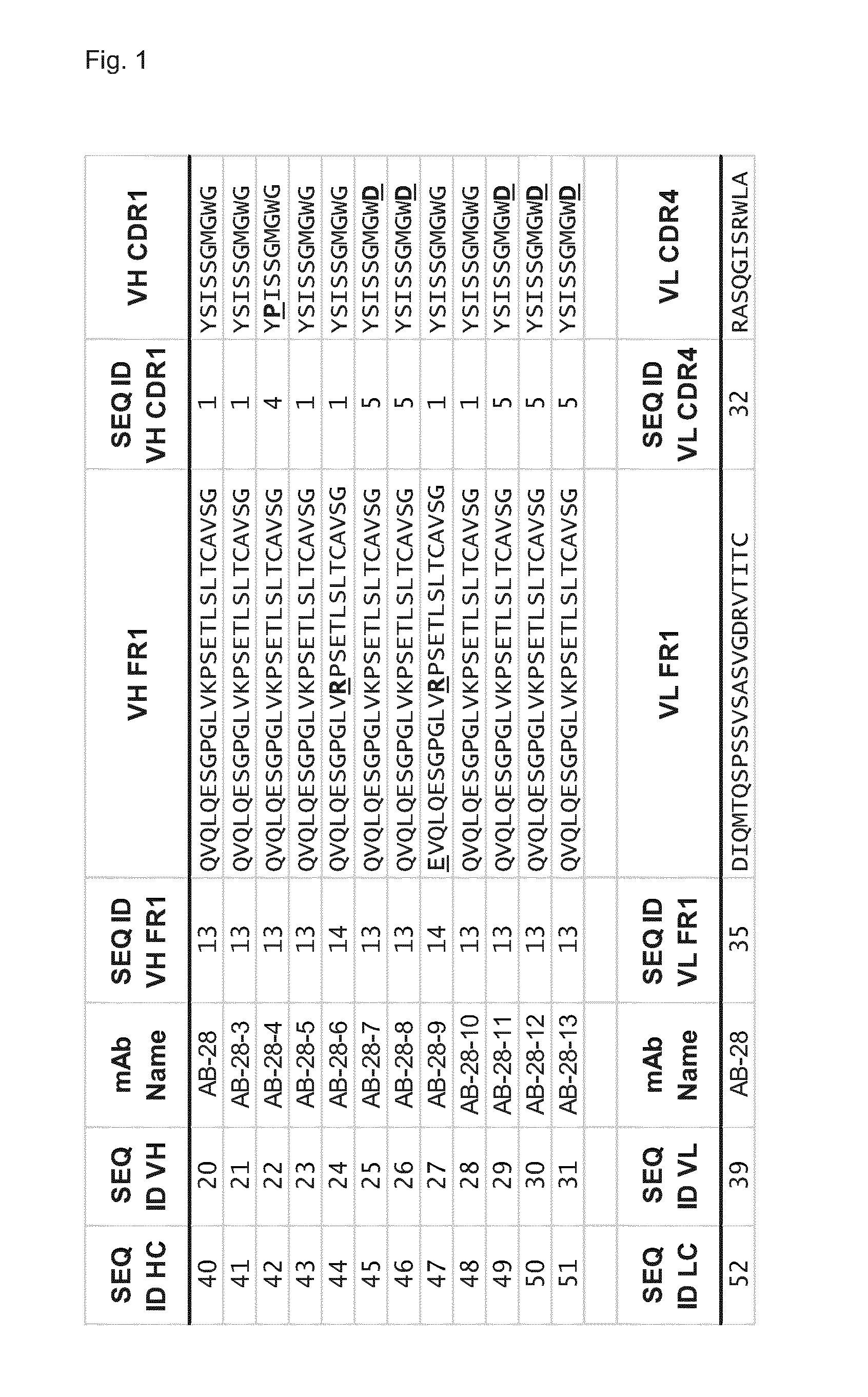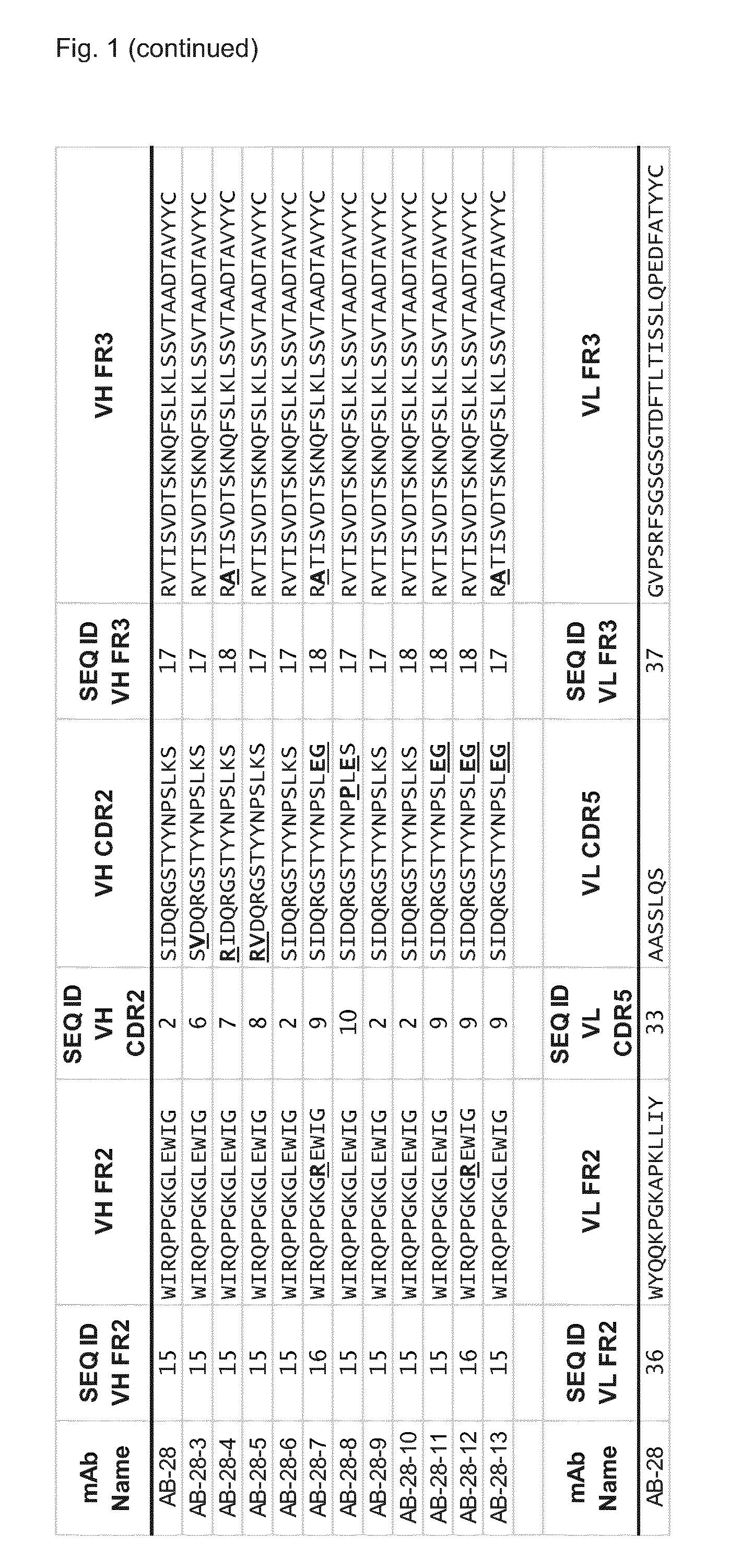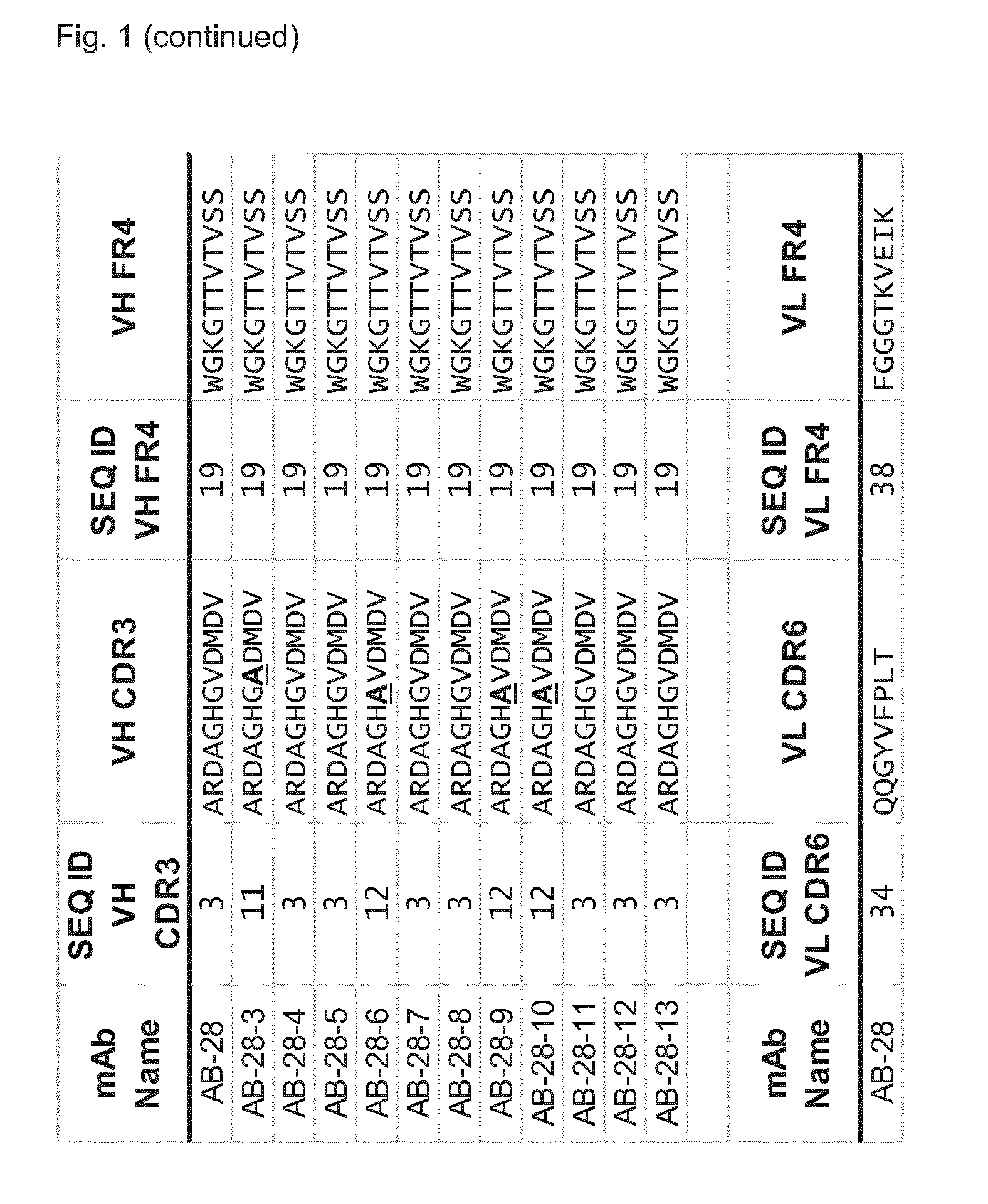Cross-reactive staphylococcus aureus antibody sequences
a staphylococcus aureus and antibody technology, applied in the field of cross-reactive staphylococcus aureus antibody sequences, can solve the problems of unfavorable new antibiotics to address this medical problem, unfavorable prevention or treatment, and inability to effectively fight i>s. aureus /i>infections, and achieve the effect of improving the affinity of individual toxin components and increasing the toxin neutralizing potency of hla
- Summary
- Abstract
- Description
- Claims
- Application Information
AI Technical Summary
Benefits of technology
Problems solved by technology
Method used
Image
Examples
example 1
Generation of Hla—Bi-Component Toxin Cross-Reactive mAbs Binding with High Affinity to Individual Toxin Components
[0597]Methods:
[0598]Generation of Recombinant Toxins.
[0599]The genes for the S- and F-components were derived from the TCH1516 USA300 strain, codon optimized for E. coli expression, generated by gene synthesis (Genescript, USA), (see FIG. 7) cloned into pET44a and the proteins were produced in BL21, Rosetta or Tuner DE3 strains without signal peptide sequences (determined using the PrediSi program; Hiller, Nucleic Acids Res., 2004, 32: W375-W379)
[0600]LukS, LukF, LukE, LukD, HlgA, HlgC and HlgB were expressed in soluble form with an N-terminal NusA / His6 tag which was removed proteolytically after the first purification step. Purification typically involved three chromatographic steps 1) IMAC (immobilized metal affinity column) 2) cation exchange or IMAC, and 3) size exclusion chromatography. The clarified cell extract was loaded onto a metal ion affinity column (IMAC 5 m...
example 2
Improved Binding Affinity of Hla—Bi-Component Toxin Cross-Reactive mAbs to LukF and LukD is Associated with Higher In Vitro Toxin Neutralizing Potency
[0607]Methods:
[0608]In Vitro Assays to Measure Toxin Mediated Cell Lysis.
[0609]Toxin potency towards target cells was assessed by measuring ATP levels of intoxicated cells (polymorphonuclear cells (PMNs), differentiated HL60 or A549 cells) or hemolysis activity on red blood cells. Briefly, Hla or an equimolar mixture of the F- and S components, were serially diluted in assay medium and used for intoxication of cells. Cell viability of PMNs, differentiated HL60 and A549 cells was then examined using a commercially available kit (Cell Titer-Glo® Luminescent Cell Viability Assay; Promega, USA) according to the manufacturer's instructions. Percent viability was calculated relative to mock-treated controls.
[0610]For Hla, two different in vitro assays were performed using either the human lung epithelial cell line A549 or rabbit red blood ce...
example 3
Improved Binding Affinity of Hla—Bi-Component Toxin Cross-Reactive mAbs to LukF and LukD is Associated with Higher In Vivo Protection
[0621]Methods:
[0622]Passive Protection of Mice with Monoclonal Antibodies.
[0623]The protective effects of anti-S. aureus toxin antibodies were evaluated in several murine models. Passive immunization with mAbs was performed intraperitoneally 24 h prior to the lethal challenge with recombinant toxins. Groups of 5 mice (BALB / c) received 5 or 10 mg / kg doses (100 or 200 μg / mouse, respectively) of the individual mAbs diluted in PBS. Control groups received either PBS alone or the same dose of isotype matched non-specific mAb. Challenge was performed intravenously with HlgA-HlgB or HlgA-LukD toxin pairs at 0.2 and 1 μg (each component) per mouse doses, respectively.
[0624]Results:
[0625]Cross-reactive Hla mAbs with D=18 pM) and AB-28-9 (KD=5 pM).
[0626]The cross-reactive mAbs displayed the broadest range of affinities towards LukD from 85 pM to 2.2 nM. The test...
PUM
| Property | Measurement | Unit |
|---|---|---|
| Fraction | aaaaa | aaaaa |
| Molar density | aaaaa | aaaaa |
| Molar density | aaaaa | aaaaa |
Abstract
Description
Claims
Application Information
 Login to View More
Login to View More - R&D
- Intellectual Property
- Life Sciences
- Materials
- Tech Scout
- Unparalleled Data Quality
- Higher Quality Content
- 60% Fewer Hallucinations
Browse by: Latest US Patents, China's latest patents, Technical Efficacy Thesaurus, Application Domain, Technology Topic, Popular Technical Reports.
© 2025 PatSnap. All rights reserved.Legal|Privacy policy|Modern Slavery Act Transparency Statement|Sitemap|About US| Contact US: help@patsnap.com



